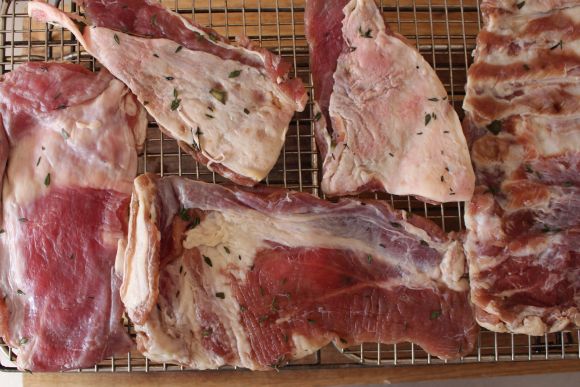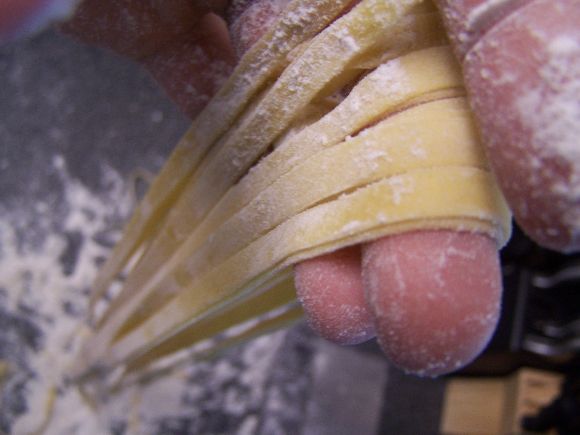
Ramps : A Sustainable Harvest
Allium Tricoccum, AKA:The Ramp!
One of the (if not thee) most recognizable wild edibles boasted by seasonally driven restaurants (toting fresh Spring menus) scattered about the northern hemisphere. The Ramp (known by many names; Wild Leek, Ramsons, Wild Garlic, Wood Leek or Spring Onion… just to name a few) has grown in popularity with the gastronomic explosion that has occurred over the past decade. Prior to this stardom, the delicacy was harvested for centuries heralded as the best kept secret of so many foragers past. An Ingredient from a time that seems to be forgotten; A time when the Ramp was something more than just another novelty “Wild” edible.
Early on in my career (somewhere in my twenties) I found myself running the kitchen of a small resort nestled deep in the backwoods of Northern Wisconsin. It was a different place; quite peculiar truth be told. It was a romantic getaway targeting clients who were looking to spend “1 on 1” quality time alone; nuzzled up next to a grand fireplace whilst feeding each other chocolates and sipping champagne, no doubt. You may be questioning the relevancy; but I’ll get there. I cooked meals for two, intimate dinners. My menus were simplistic but I was met with a challenge unlike any I had ever faced prior. My recipes and cooking philosophies were limited due to the parameters set forth by ownership. I was expected to make beautiful delicious foods with balance and depth… avoiding the use of onions & garlic. Still lost?
Well, You see; a “Harsh Flavor” may deter a couple from engaging in one another and the purpose of such a romantic getaway was to clearly ravage your counterpart and nobody wants to get “down” with someone who has garlic or onion breath… Don’t get me started on the justifications surrounding why I couldn’t serve cabbage.
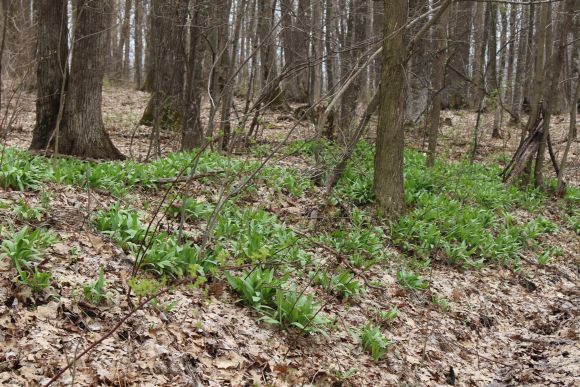
Irregardless as to why I had restrictions, I spent years of my life looking for onions that weren’t onions and garlic that was not garlic. Through one of my many preservice-stress-induced-forays, I stumbled upon something rather unique and recognizably Chic. The Ramp. It is easily permissible because of the lure of the elusiveness, the idea that it was such a rarity. For this delicacy to be dug from the soils of the property… I had an in. It was a foraged item, by the chef, from outside of your cottage… who cares who you’re locking lips with after experiencing such a “Rare” Novelty… I had found a caveat to the “No onion / garlic” rule; even if it was illogical, irrational and couldn’t make sense to me… It was permitted and I had both the taste of onion & garlic in one ingredient.

Ramps are one the first signs of life in a thick wooded lot, appearing weeks after winter retreats and the snow melts away. Spring is a beautiful time of rebirth, regeneration & rejuvenation; splashing brilliant color across the weathered landscape. The term “Ramp” has almost become a synonym for Spring in cookery; it has become a prized seasonal staple in many kitchens of every different cuisine. Here in the deep woods of Wisconsin, each Spring is eagerly anticipated and well earned after our “6 month dead period”. The Wild Leek is rather easy to identify and once you find your first ramp in spring, you will look into the woods and all you will see will be the ramps. The Wild Leek is comprised of two large, broad flat leaves with a an incandescent emerald (almost turquoise) sheen. Early on, they stand out against the forest floor littered in the leaves and decaying foliage. As the wooded floors take color, the wild leek towers over the other regenerating greenery, having a head start. I reiterate, once you see your first Ramp; you can never un-see a ramp.

Forager’s Standard & Code of Ethics:
Once excavated, the bulb is found among a small collection, wrapped in an almost “tissue paper” textured sheath. The bulb is easily recognizable once separated from the clump. When harvesting, there are many notes, tricks, tips, and regulations someone must abide by in order to adhere to a Forager’s Standard & Code of Ethics. These are unspoken rules, rather guidelines that creates a responsible harvester.
Firsts and foremost: Educate yourself before strolling into the woods. Know what you are looking for and understand how to harvest your findings in a way that insures a future regeneration. Also, very important, know the local laws if you are not on land that you own. When in doubt; GET PERMISSION! Get clearance from whomever owns the land; even if its public land. I repeat, know your local laws.
In the picture below and above, you will notice that the roots are still intact. This is one way to harvest insuring that your shelf life is prolonged and often when a forager waltzes into your kitchen with a crate full of ramps in the early spring; this is what you’ll find. Do not go into the woods and dig up every ramp you find, roots and all… When you dig up the roots entirely, you are largely disrupting the soil; you are removing the plant in it’s infancy, you are making sure the plant is never allowed to fully mature, produce seed, germinate, etc. etc. Never dig up all of the ramps in one area. I like to use a 10% rule if I’m digging roots. Never take more than 10% of a total crop.

If you are uncomfortable with percentages and numbers and you come to a rather small patch; stick to collecting the greens. They are delicate, subtle, yet still pungent and robust. Use a sharp pocket knife and make clean cuts just under the green. This will minimally disturb the soil and leave the bulbs to continue in their life cycle uninterrupted. Do not force yourself to find a Wild Leek. Be smart, humble and sensible; This means, make sure it is a Wild Leek before you “dig in”. If it looks like a Ramp but you are unsure, nab a piece of the leaf and rub it between your fingers breaking the cell walls, bruising the flesh of the petal and give it a whiff. If it does not smell like onion, do not proceed. Simple stuff really. If it indeed happens to smell like onion, proceed to taste; stick a small piece in your mouth. If it tastes of bland melon or cucumber, or reminiscent of watered grass, and there is nothing more to it; do not proceed… However, If it instantly tastes like garlic, chive, earth, sharp scallion; if you can taste the terrior and you are overwhelmed with memories of the first ramp risotto that was made for you in the first kitchen you worked in, with a chef that was worth a shit… You’re in the right patch of woods. Proceed responsibly. I am not your father; but let it be noted that I do not condone serving anything that you “think” is a wild edible to anyone who is entrusting you with their well being. Simply stated, do not get excited then pick a basket full of “maybe” ramps (or possibly skunk cabbage or lily of the valley, that you mistook for ramps but are actually non-edible look-a-likes that are often confused with ramps) and feed them to your friends or put them on a menu because you can’t help yourself and that shit looks “super dope” on your social media… Be smart, be patient, understand the ingredient and what you have before feeding it to someone else. Be Responsible. With that word of caution; It’s genuinely not that difficult to find ramps and the reward is astronomical! Ramps are an approachable, easily identified abundant food for even the newest of harvesters.

In the Northwest Wisconsin, Wild Leeks can be harvested as early as mid-April some years; given the proper conditions. Rich, moist soils with saturates in nutrients from mass amounts of decaying foliage (mother nature’s naturally occurring compost). Before the trees become a shaded summer canopy, the Ramp capitalizes on being the first “plant to the party” and gobbles up the mass amounts of sunshine seeping through the bare branches of the woods. They grow rapidly, in large amounts covering vast acreage. Just as soon as they flourish… the leaves begin to die back and the plant focuses it’s energy towards the bulb. There is a short time frame for harvesting the Greens, which I have measured on several patches and came away with the understanding of a 7 week period for my stomping grounds. The bulbs can be harvested well into the early fall even after the leaves have yellowed leaving behind a beautifully decorative “Star” acting as the “X” that sits just above the treasure.
Going For Green!
I will focus on the Greens for the rest of this post. There is much ado about Ramps. So much so, in fact, that in recent years I have heard chefs grow tired of the “Same Old” foraged edible… To this, I simply offer the insight of discovery. Perhaps, It would not be chastised or scoffed with a bit of creativity. The Ramp is the Ramp for a reason… It’s Fucking Delicious! It needs nothing to make it better… unless your covering it in more ramps. We’ve all had pickled ramps (Love ’em), Ramps Pesto or Chimmichurri (mmm), Ramp Salt (okay) Butter Poached, Fire Roasted, Grilled, Raw… I cannot get enough. But, there is a level of greatness to the Ramp that goes beyond a quick fix whilst in season. The Preserves…

There is a beauty in preservation. Last season I harvest the greens alone and left the bulbs be. I dehydrated about 75% of my loot for a ramp salt that I was hoping would carry me through the winter… I dehydrated the greens… Dried. Crushed… Then why not sifted. Through this process, muscle memory kicked in… Then I slowly realized that I no longer had any intention of making a Ramp Salt; Not just on this day, but… You know, For the rest of my life.
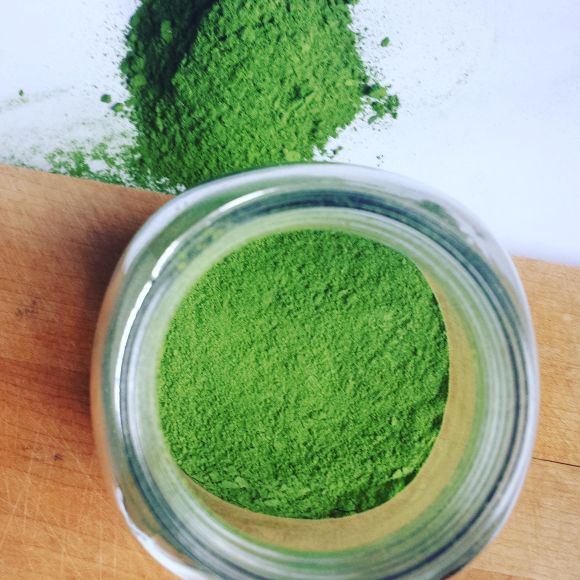
Ramp Powder. Huh. I dig powdered vegetables. It’s kind of a thing I do. (If you know my “main squeeze”… you saw this coming) Ramp Cavarola.
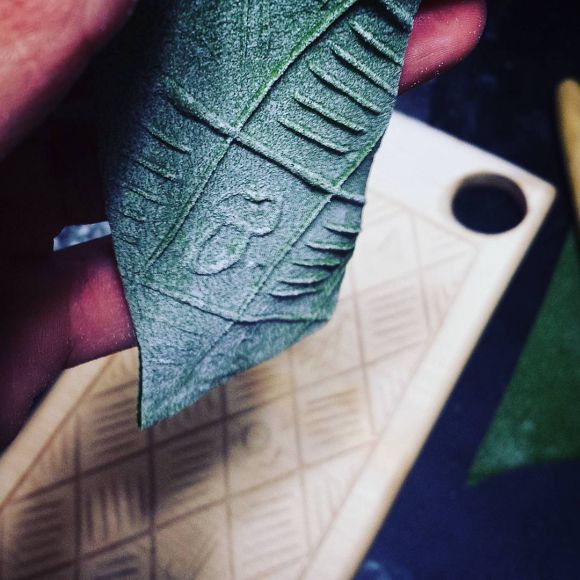
You have never had better Butter Noodles; I swear it on my first born… So simple. So Perfect. With the powder in hand, I reworked several of my pasta recipes substituting the ramp powder for a percentage of the dry ingredients, then accommodating for the variance in water activity between the flour I used and Dehydrated Ramp… LGF Pantry’s Ramped “Big Mac” was born.
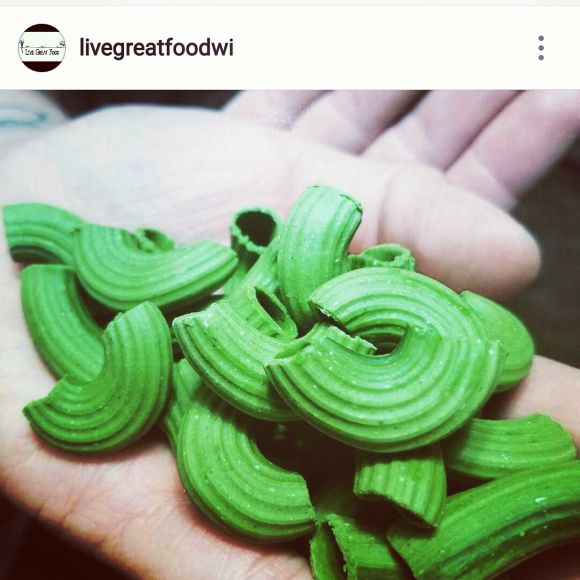
The color only consumed me. Even with a minimal presence in the overall weight of the recipe, the flavor was remarkable, unmasked, crystal clear. The sweet, earthy, pungent savor. You could taste the The Spring Funk in every bite, you could taste the excitement. Once dried (or froze) any of the pastas I created kept well through the winter. We only just finished our last bag of Ramp Agnolotti (stuffed with Roasted Hen & Black Morel) last week… Frozen for over 10 months and the flavor of a spring to come carried me through this winter.

And once the seed was planted… It grew into everything. it was this on to the meat!
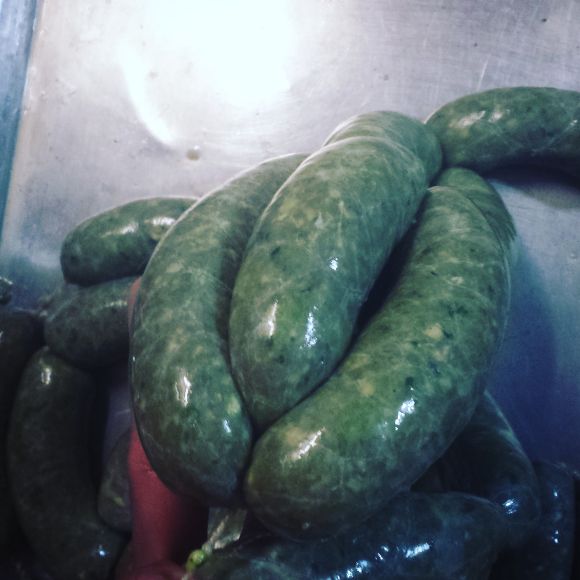
Fresh, Whole, Juiced, Shredded, Blitzed, Dried, Pickled… Anyway you have it; a ramp is made at home in a Sausage. I “Ramped” up a Green Chorizo… Que Fresca! Then, there was this Ramp & Black Trumpet Brat that changed my opinion on just how necessary it is to have condiments with brats… Completely avoidable. Endless are the possibilities; but I’m far from over with the Wild Leek.
Just the “Same Ol’ Foraged Ingredient”. Perhaps, If you ever reach this place; you challenge yourself to discover why it is so great in the first place. There is something more than what initially catches your interest; Never stop pushing to understand the complete capacity of whatever ingredient humbly sits in front of you. A pile of sticks will never be anything more until you create a spark. WAX ON; WAX OFF! The understanding, appreciation and motivation is in the practice.

For those individuals who suggest that ramps are endangered or disappearing from the woods… I offer this mantra. If you give a man a patch of ramps; his dinner will be extraordinary. If you teach a man the responsibility and importance of maintaining his harvest… he will eat exceptionally well for the rest of his life. I have been collecting from the same patches on an annual rotation for the past three years; Each time I revisit a site, the Wild Leeks come back in larger numbers. Someone was kind enough to teach me the importance of sustainability early on and through that awareness, once I saw my first cluster of Ramps, I haven’t had to search for other clusters to fill my baskets.
